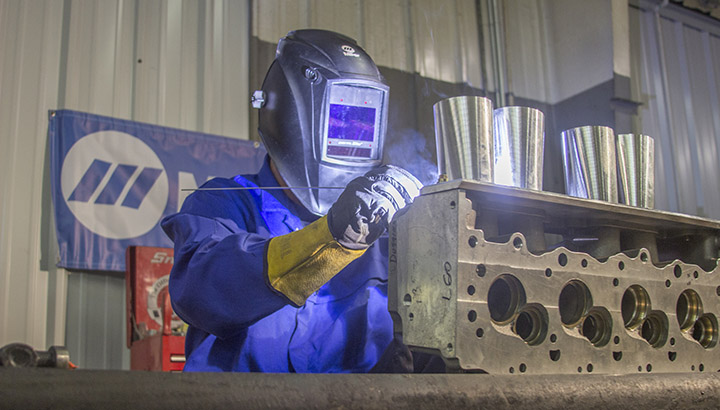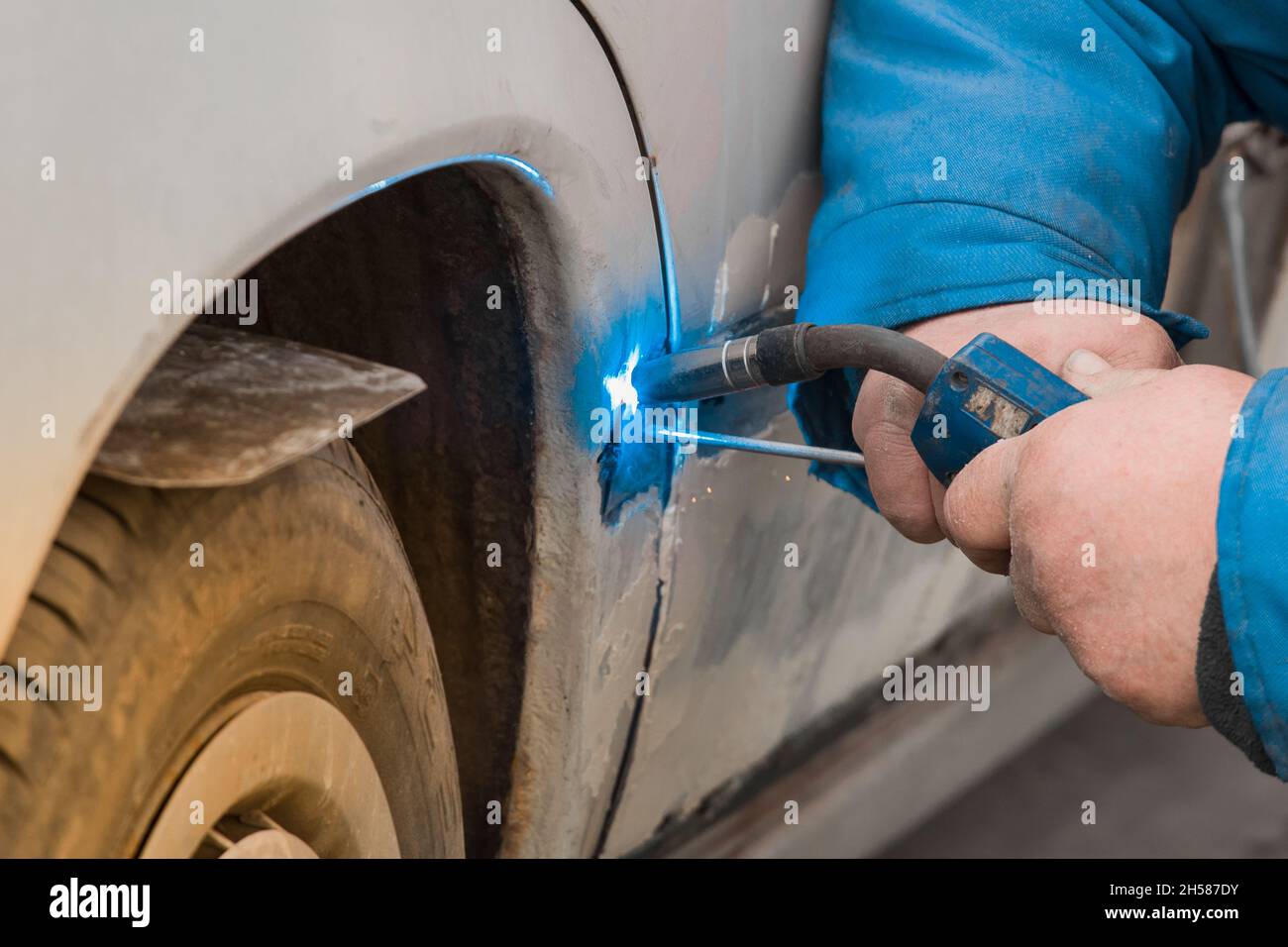All About Welding: Key Insights Into Techniques and Ideal Practices for Success
Welding includes a range of techniques, each matched for details materials and applications. Comprehending these approaches, such as GMAW, SMAW, and TIG, is vital for achieving optimal outcomes. The ideal equipment and security techniques can not be forgotten. As prep work and repairing play important functions in the welding procedure, grasping these elements can greatly improve the high quality of the final product. What are the key elements that ensure a successful weld?
Understanding Various Welding Techniques
Welding methods encompass a range of approaches, each suited to certain applications and products. Amongst the most typical strategies are Gas Metal Arc Welding (GMAW), Secured Steel Arc Welding (SMAW), and Tungsten Inert Gas Welding (TIG) GMAW, additionally called MIG welding, is preferred for its rate and adaptability, making it optimal for slim materials. SMAW, or stick welding, is favored for its simplicity and performance in exterior atmospheres, particularly with thicker metals. TIG welding provides accuracy and control, making it suitable for detailed work and non-ferrous metals (Montana Mobile Welding and Repair Belgrade Welding). Each technique has its one-of-a-kind benefits and factors to consider, enabling welders to pick the best technique based on the task's requirements, product type, and wanted results. Comprehending these strategies is essential for effective welding
Necessary Welding Tools and Devices
While various welding methods need details abilities, the right tools and tools are similarly vital for accomplishing top quality outcomes. Important welding tools includes welding makers, which vary depending upon the technique-- such as MIG, TIG, or stick welding. Protective gear, including aprons, gloves, and safety helmets, warranties security and comfort during the process. In enhancement, clamps and fixtures aid secure products in area, making sure precision in welds. Consumables like welding rods, wire, and protecting gas are likewise important parts that influence the top quality of the weld. Additionally, tools such as cutters and mills assist in surface preparation and post-weld finishing, adding to a specialist result. Purchasing high-grade equipment ultimately boosts the efficiency and efficiency of welding jobs.
Security Practices in Welding
Proper safety and security practices are crucial in the welding industry to protect workers from potential hazards. Welders must wear ideal personal safety tools (PPE), including safety helmets with appropriate shading, gloves, and flame-resistant garments. Ample ventilation is important to decrease direct exposure to hazardous fumes and gases generated throughout the welding procedure. Additionally, workers need to be trained in the proper handling of welding equipment to stop mishaps. Fire safety measures, such as maintaining flammable products away from the welding area and having fire extinguishers readily available, are necessary. Normal evaluations of devices and offices can aid recognize potential risks prior to they cause mishaps. By sticking to these security techniques, welders can develop a much safer working setting and minimize dangers connected with their trade.
Readying Materials for Welding
Preparing materials for welding is a vital action that considerably influences the high quality and honesty of the end product (Montana Mobile Welding and Repair). Proper preparation includes cleaning up the surfaces to get rid of contaminants such as dust, rust, and oil, which can jeopardize the weld. Techniques such as grinding, sanding, or making use of solvents are generally employed to attain a tidy surface area. In addition, ensuring that the products mesh well is crucial; spaces can lead to weak welds. It's also vital to take into account the placement and positioning of the parts, as this will certainly affect the ease of welding and the last end result. Finally, choosing the ideal filler product and making certain compatibility with the base steels is important for achieving solid, durable welds
Tips for Getting High-Quality Welds
Attaining top notch welds requires interest to detail and adherence to best methods throughout the welding procedure. Appropriate joint preparation is important, making sure surfaces are clean and totally free from pollutants. Picking the ideal filler material and welding strategy based on the base metals is important for ideal bonding. Preserving constant traveling rate and angle while welding can advertise and prevent issues harmony. In addition, controlling warmth input is necessary; extreme heat can lead to bending and compromised joints. Regularly evaluating the welds throughout the procedure allows for instant modifications if required. Finally, using suitable post-weld treatments, such as cleansing and stress and anxiety relief, can improve the toughness and honesty of the weld, eventually ensuring a successful result.
Troubleshooting Typical Welding Issues
Welding typically provides difficulties that can impact the top quality and stability of the last item. Typical problems such as porosity, inconsistent weld beads, and getting too hot can develop, each requiring specific repairing strategies. Understanding these issues is crucial for welders to improve their abilities and achieve excellent outcomes.
Porosity Troubles Clarified
Porosity can often be neglected, it remains an essential issue in welding that can endanger the stability of an ended up product. Porosity describes the presence of tiny gas pockets within the weld website bead, which can lead and damage the joint to early failure. This trouble usually develops from contaminants, wetness, or inappropriate protecting gas insurance coverage throughout the welding process. To mitigate porosity, welders should validate that the base materials are tidy and dry, make use of proper shielding gases, and keep regular welding specifications. On a regular basis checking the equipment and setting can likewise help determine possible concerns before they show up in the weld. Attending to porosity effectively is necessary for achieving strong, long lasting welds that meet high quality requirements.

Inconsistent Weld Beads
Inconsistent weld beads can significantly impact the top quality and strength of a completed product. Different elements add to this concern, consisting of incorrect traveling rate, incorrect amperage setups, and inconsistent electrode angles. When the welder moves also swiftly, a bead might show up narrow and lack infiltration, while relocating too slowly can trigger too much build-up. Additionally, using the incorrect amperage can cause either damaging or extreme spatter, both of which concession weld honesty. The welder's method, such as irregular lantern movement, can also result in unequal bead appearance. To minimize these issues, welders need to concentrate on keeping steady, controlled activities and guaranteeing appropriate tools setups to accomplish uniformity in their welds. Uniformity is vital to achieving strong and reliable welds.
Overheating and Bending Issues
Too much warmth during the welding procedure can result in substantial overheating and buckling concerns, impacting the architectural honesty of the work surface. These problems commonly manifest as distortion, which can jeopardize positioning and fit-up, making further setting up testing. Variables adding to overheating include the option of welding criteria, such as voltage and travel rate, as well as the kind of material being bonded. To alleviate these issues, welders must preserve consistent travel rate and appropriate heat input while monitoring the work surface temperature level. In addition, preheating or post-weld heat treatment can aid alleviate stress and anxieties triggered by fast air conditioning - Montana Mobile Welding and Repair Fabrication. Routine assessment and adherence to ideal practices are crucial in protecting against overheating and making sure the longevity and reliability of welded structures
Frequently Asked Questions
What Are the Career Opportunities in the Welding Market?
The welding industry provides varied career chances, consisting of positions as welders, instructors, engineers, and inspectors. Experts can operate in production, construction, aerospace, and automotive industries, gaining from strong need and affordable incomes in various duties.
Just How Can I Improve My Welding Rate Without Compromising Quality?
To enhance welding speed without compromising top quality, one ought to exercise efficient strategies, keep tools, maximize setups, and improve hand-eye control. Routine training and looking for responses can additionally substantially add to attaining quicker, premium welds.
What Certifications Are Offered for Welders?
Numerous qualifications exist for welders, consisting of those from the American Welding Society (AWS), the National Facility for Building And Construction Education And Learning and Study (NCCER), and numerous industry-specific companies. These credentials boost employability and demonstrate skill proficiency.
Exactly How Does Welding Impact the Characteristics of Metals?
Welding affects the homes of steels by modifying their microstructure, which can lead to adjustments in toughness, ductility, and firmness. Warmth input and cooling prices during the procedure substantially influence these product qualities.
Can I Weld Dissimilar Metals Together?
